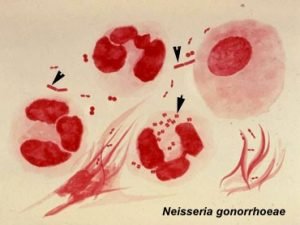
Biochemical Tests for Bacteria Identification: Types, Principle, Procedure, and Examples
Learn about the principle, types, and procedure of biochemical tests for bacteria identification with examples. Explore now! Read more
Your Trusted Source for Science Notes
Bacteriology is a fascinating field of study that focuses on the biology, structure, and function of bacteria. It has played a crucial role in our understanding of microbial life and its impact on human health, agriculture, and the environment. In this category, we’ll explore some of the key aspects of bacteriology and topics of bacteriology.
One of the fundamental areas of bacteriology is the classification and identification of bacteria. Bacteria are incredibly diverse, and scientists have developed several systems to categorize and name them. One of the most widely used methods is based on the bacteria’s genetic sequence. This technique, called DNA sequencing, allows researchers to identify and classify bacteria with incredible accuracy. It has revolutionized our ability to study microbial communities and to understand their role in various ecosystems.
Another critical aspect of bacteriology is the study of bacterial structure and function. Bacteria are unicellular organisms that have a range of shapes and sizes. Some are rod-shaped, while others are spherical or spiral. They also have a range of structures, including flagella, pili, and capsules, which play essential roles in their movement, attachment, and virulence.
Understanding the structure and function of bacteria is crucial for developing effective treatments for bacterial infections. Antibiotics are one of the most common treatments for bacterial infections. They work by targeting specific aspects of bacterial structure or function, such as cell wall synthesis or protein synthesis. However, the overuse and misuse of antibiotics have led to the emergence of antibiotic-resistant bacteria, which pose a significant threat to global public health.
Bacteriology also plays a crucial role in the field of agriculture. Bacteria are essential for soil health and plant growth, and they can be used to develop biofertilizers and biopesticides that reduce the need for synthetic chemicals. In addition, beneficial bacteria can be used to protect crops from pathogens and to improve yields.
In conclusion, bacteriology is a fascinating and important field of study that has numerous applications in various fields, from medicine to agriculture. It allows us to understand the diversity and complexity of bacterial life and to develop effective strategies for managing bacterial infections and promoting healthy ecosystems. As we continue to learn more about bacteria, we will undoubtedly discover new ways to harness their power for the benefit of humanity.

Learn about the principle, types, and procedure of biochemical tests for bacteria identification with examples. Explore now! Read more
Infection of soft tissues associated with pus formation Pus consists PMNs, bacteria, fibrin and other body fluids May be endogenous or exogenous Endogenous: source of... Read more

Bacterial resistance to drugs is a condition in which the bacteria that were earlier susceptible to antibiotics develop resistance against the same antibiotics and are... Read more

Performed to determine the minimum inhibitory concentration (MIC) of an antimicrobial agent. MIC is defined as the lowest concentration of an antimicrobial agent that inhibits... Read more

Specimen Collection Pulmonary tuberculosis: threat to both patients and others so sample should be collected and handled in a safe manner. Successful identification of pathogens... Read more

Neisseria gonorrhoeae Etiology of Gonorrhea Greek (gonos – seed and rhoia- flow) First described in urethral discharge by Neisser in 1879 Cultured by Bumm in... Read more